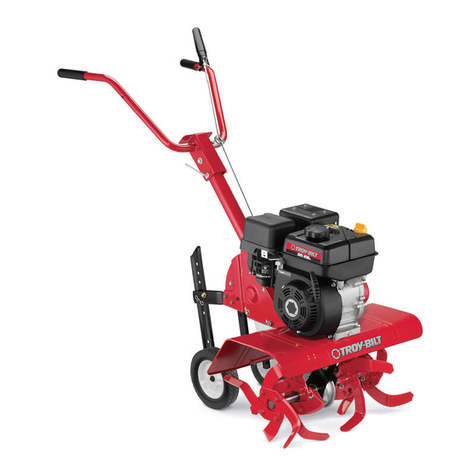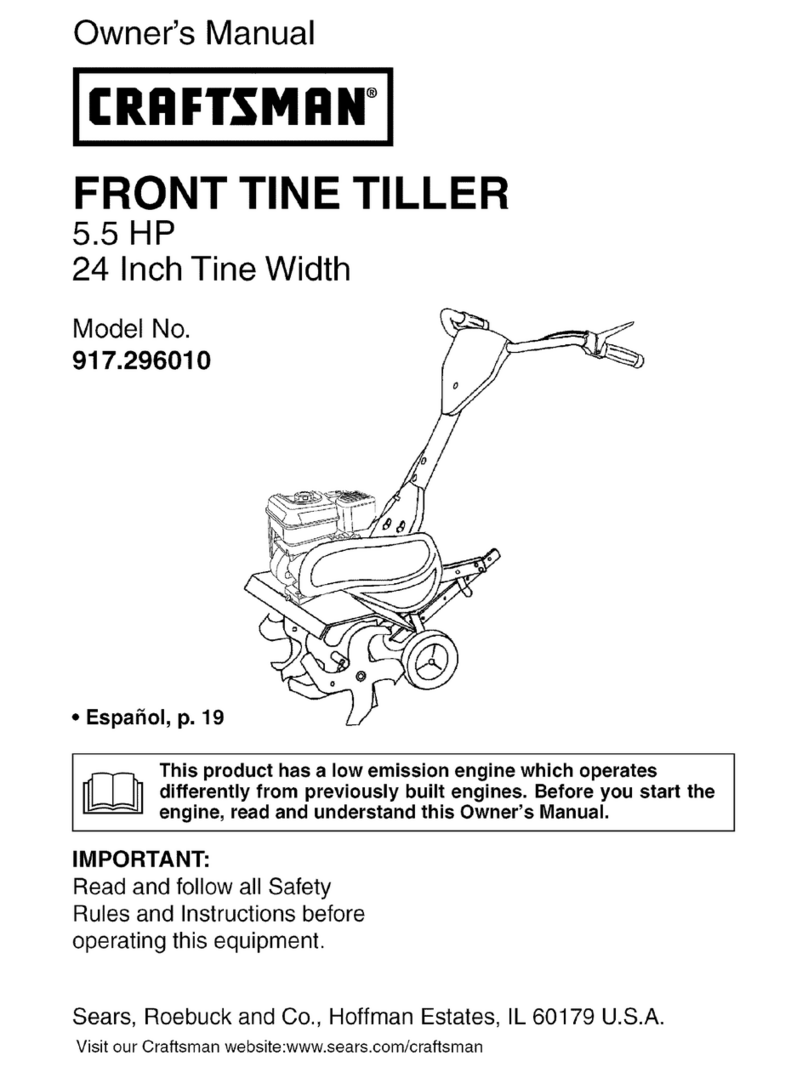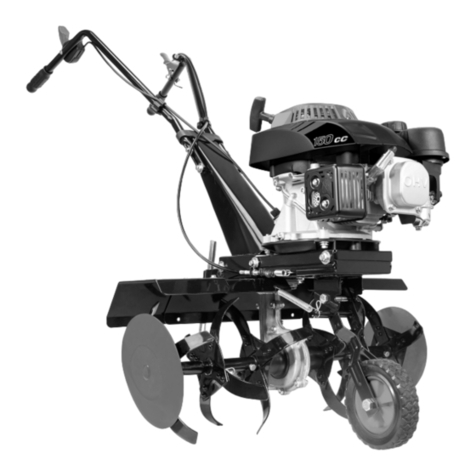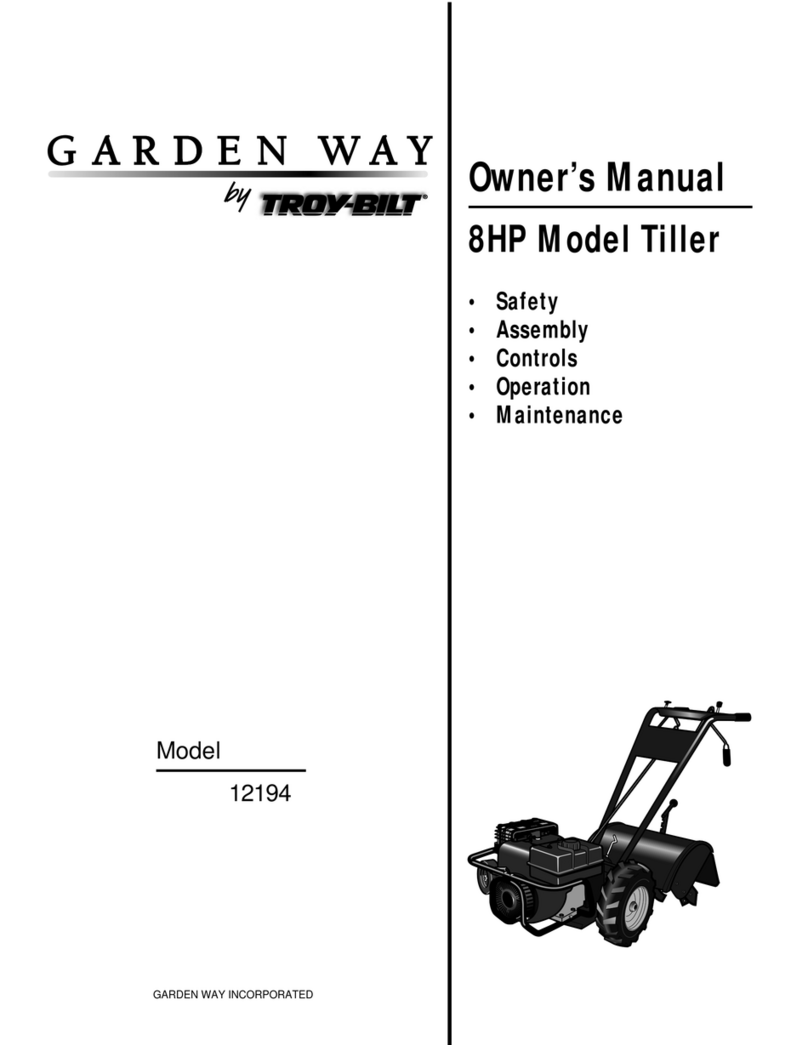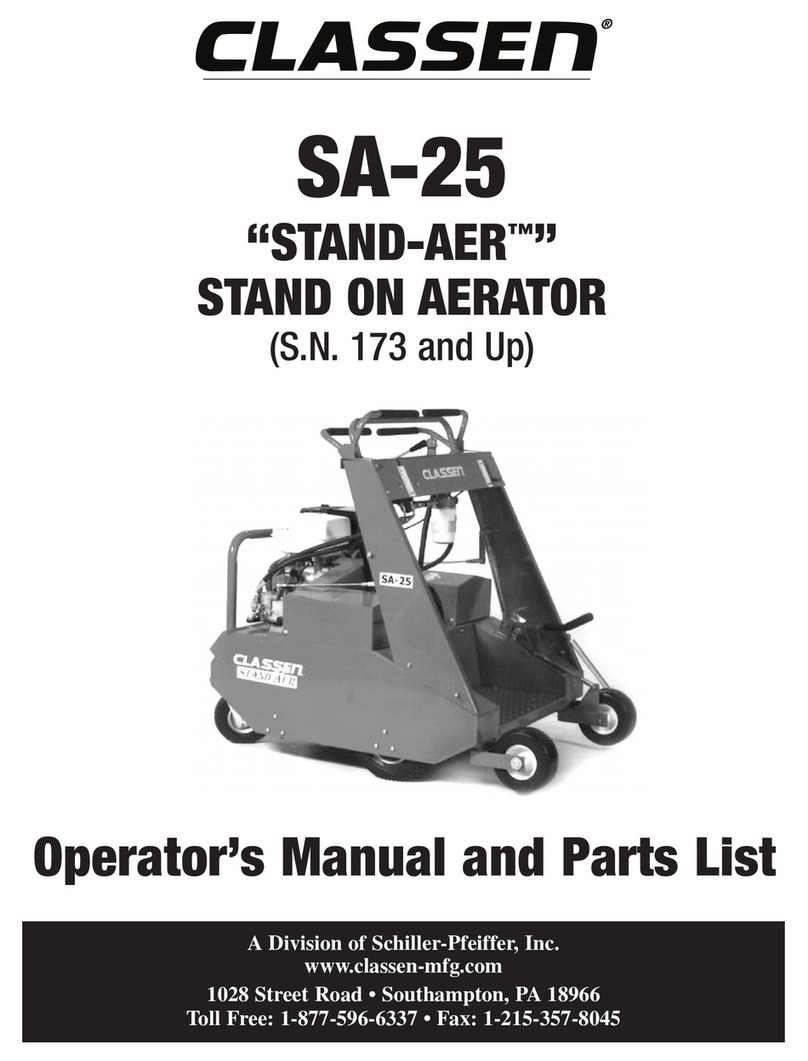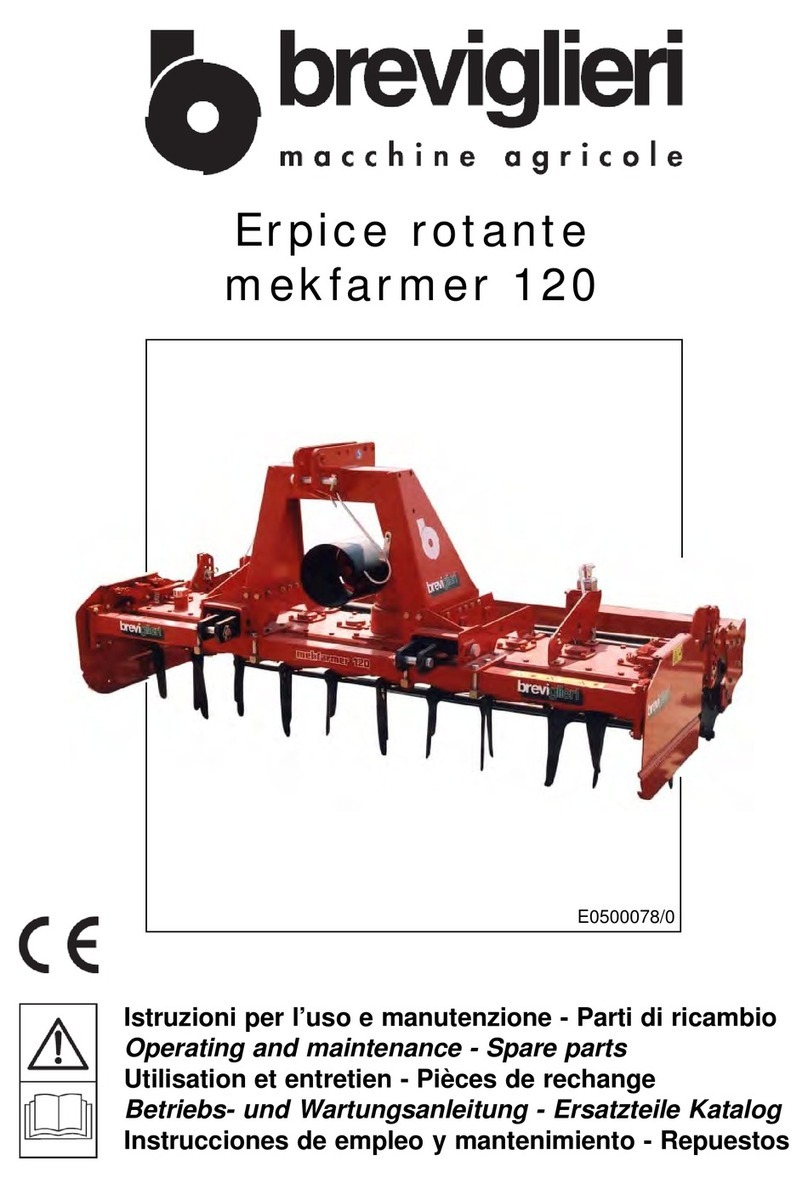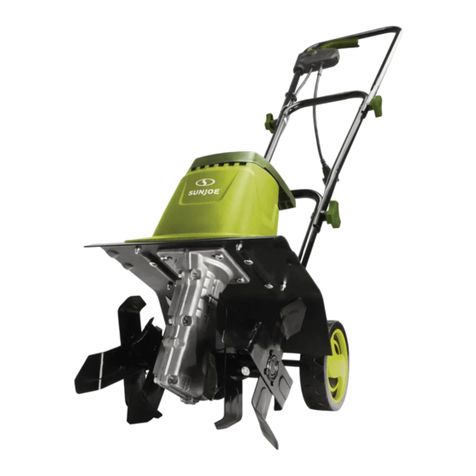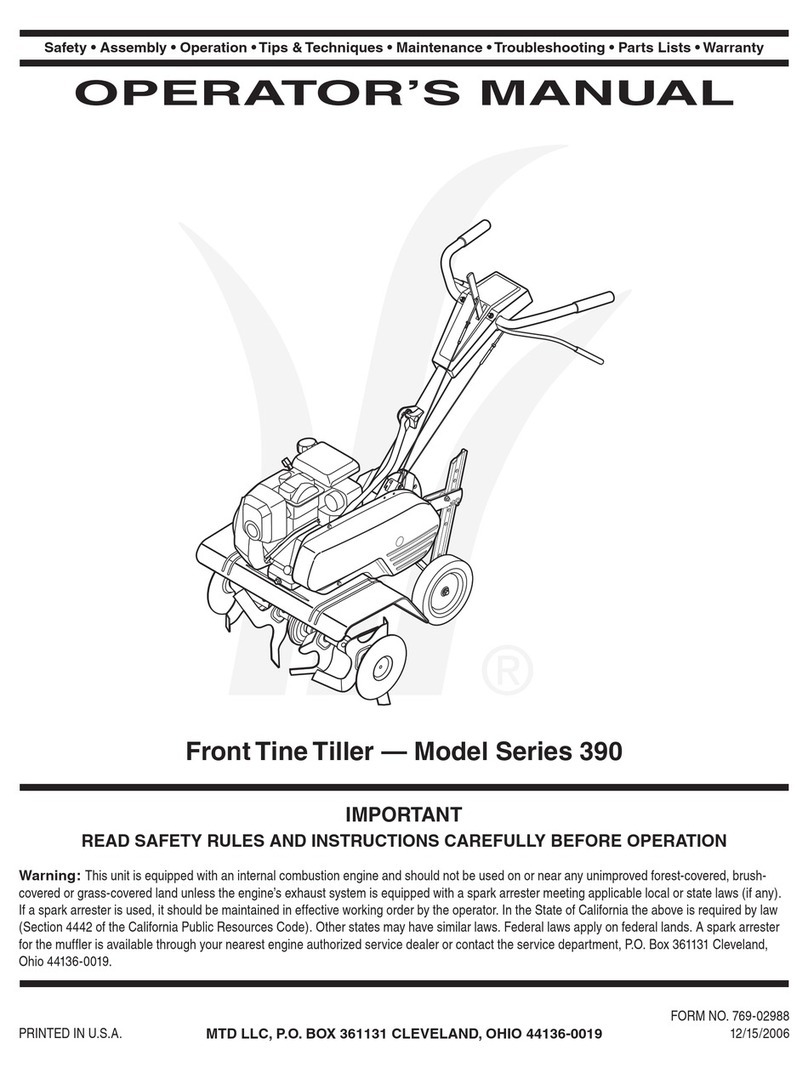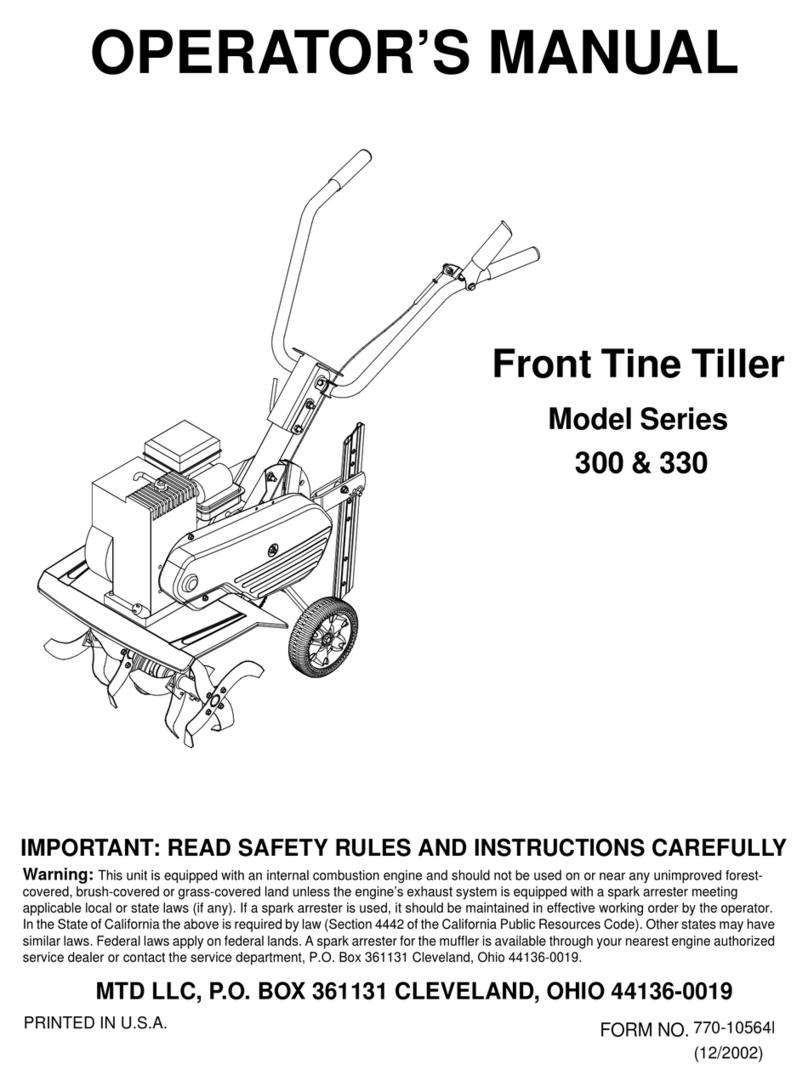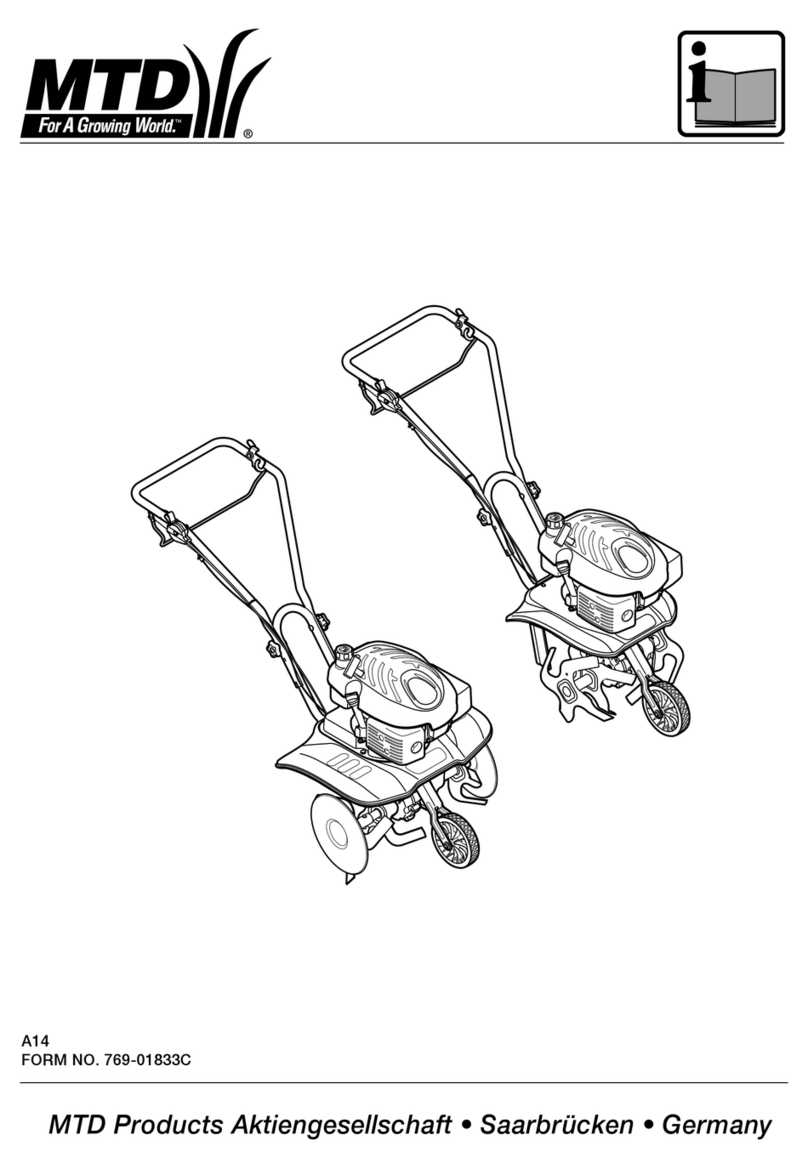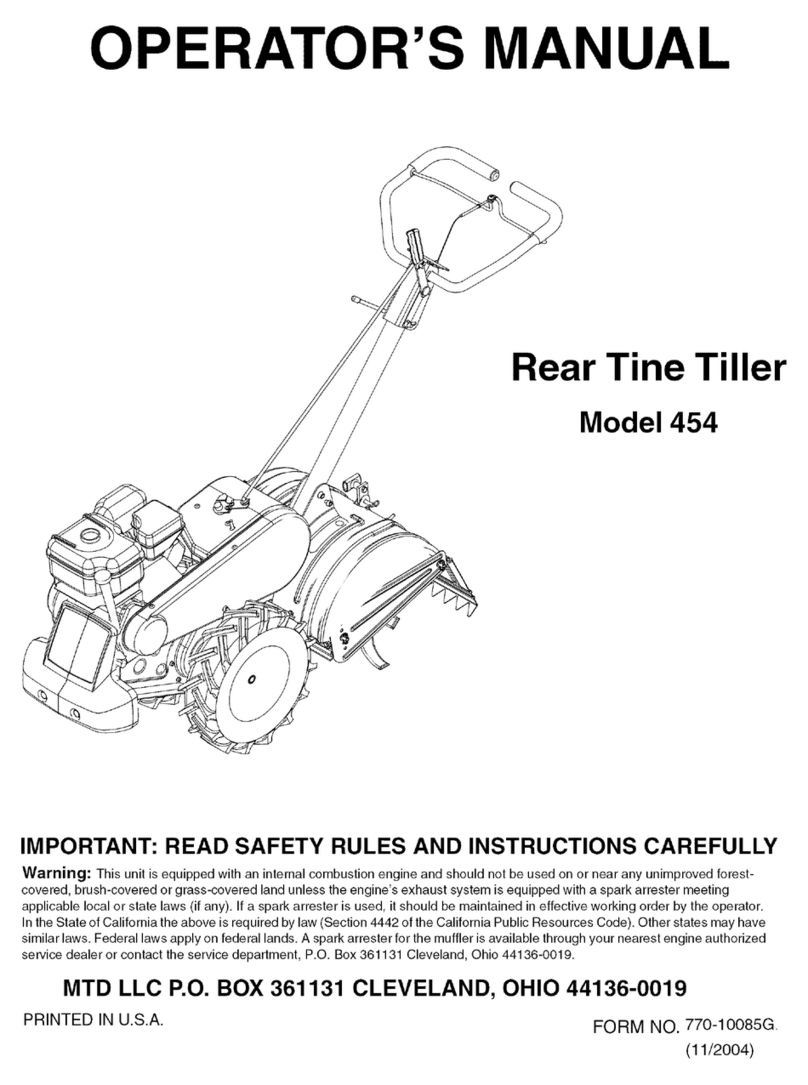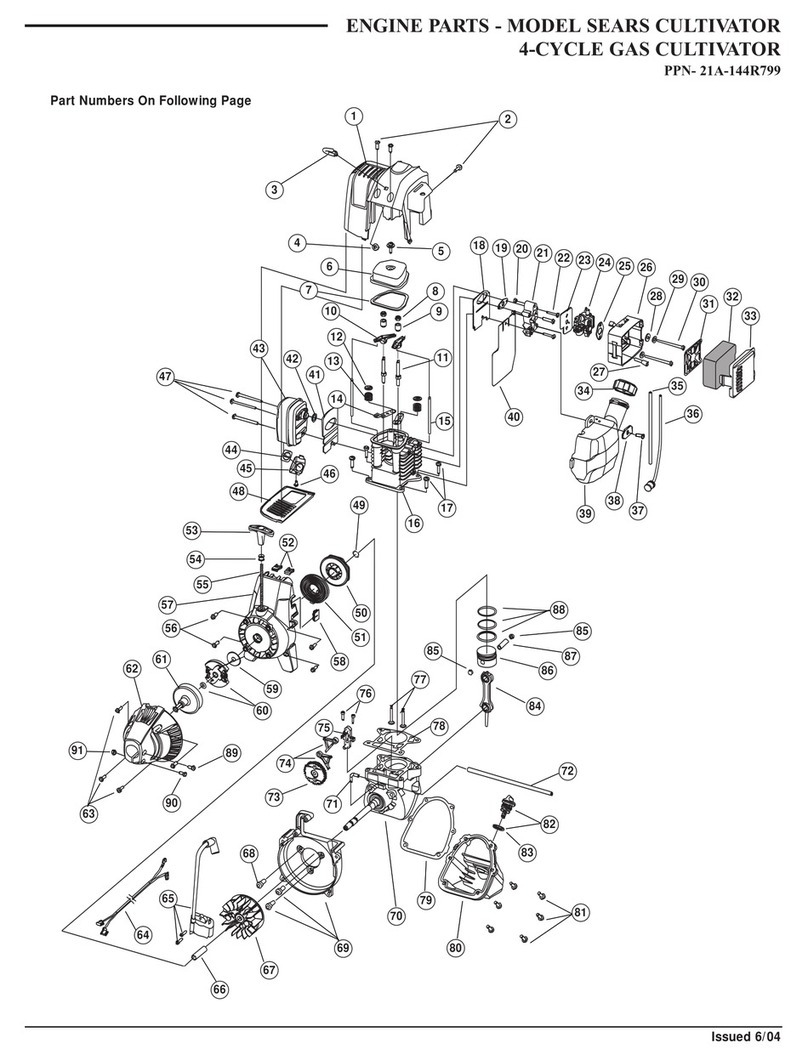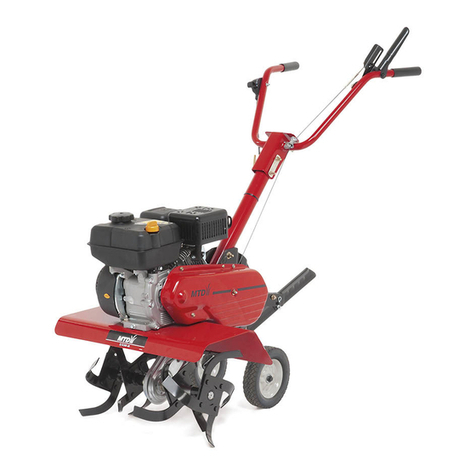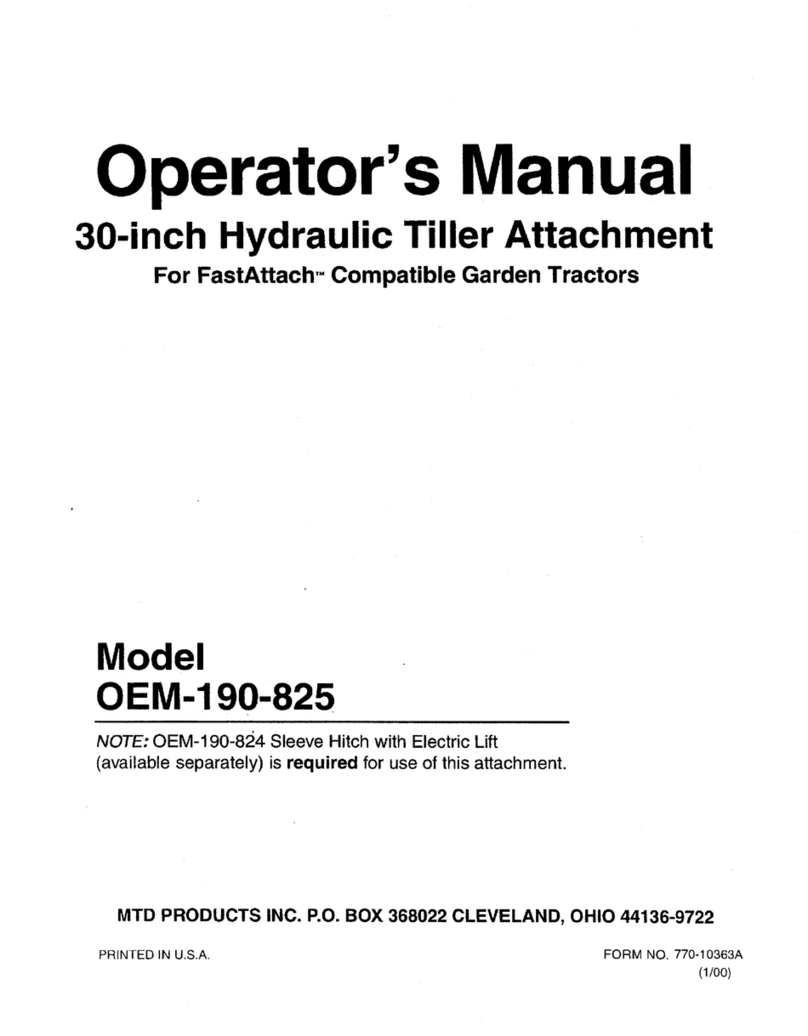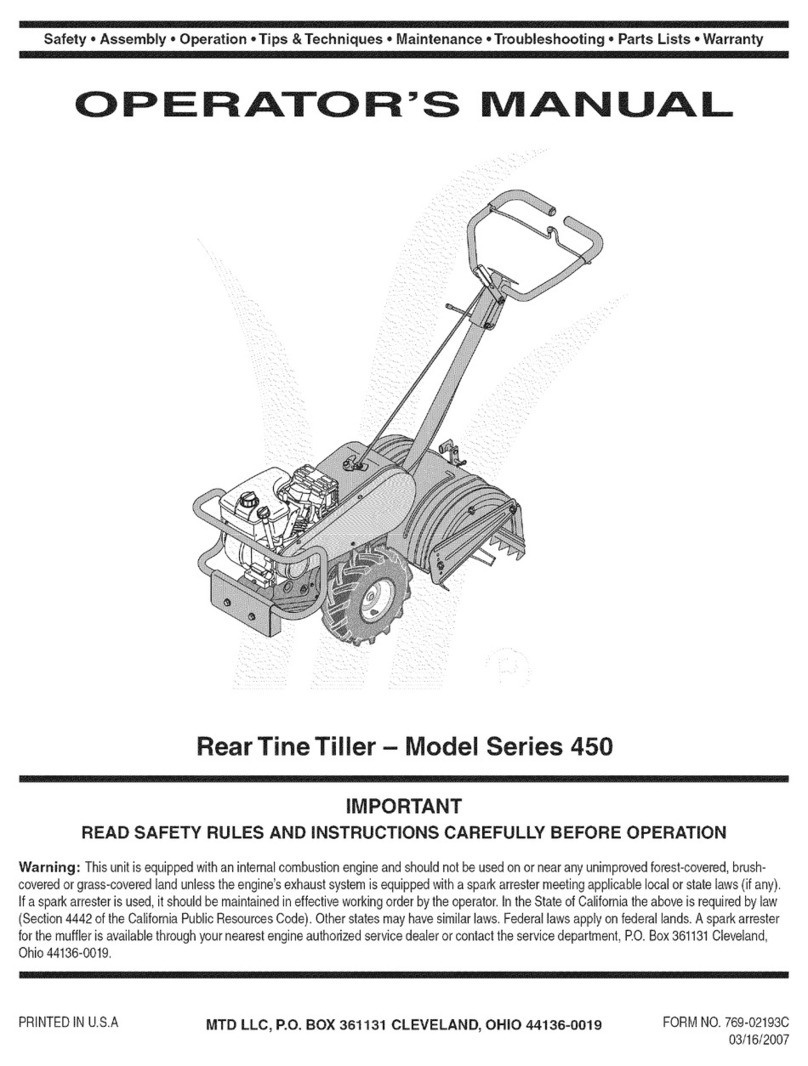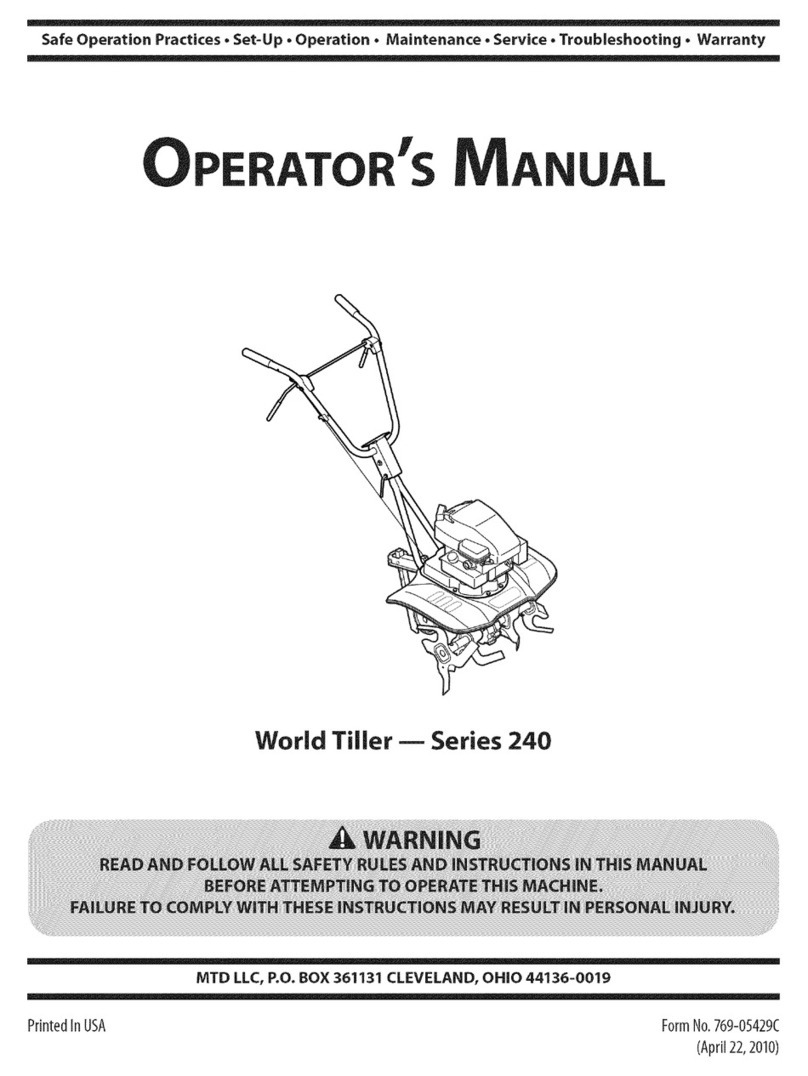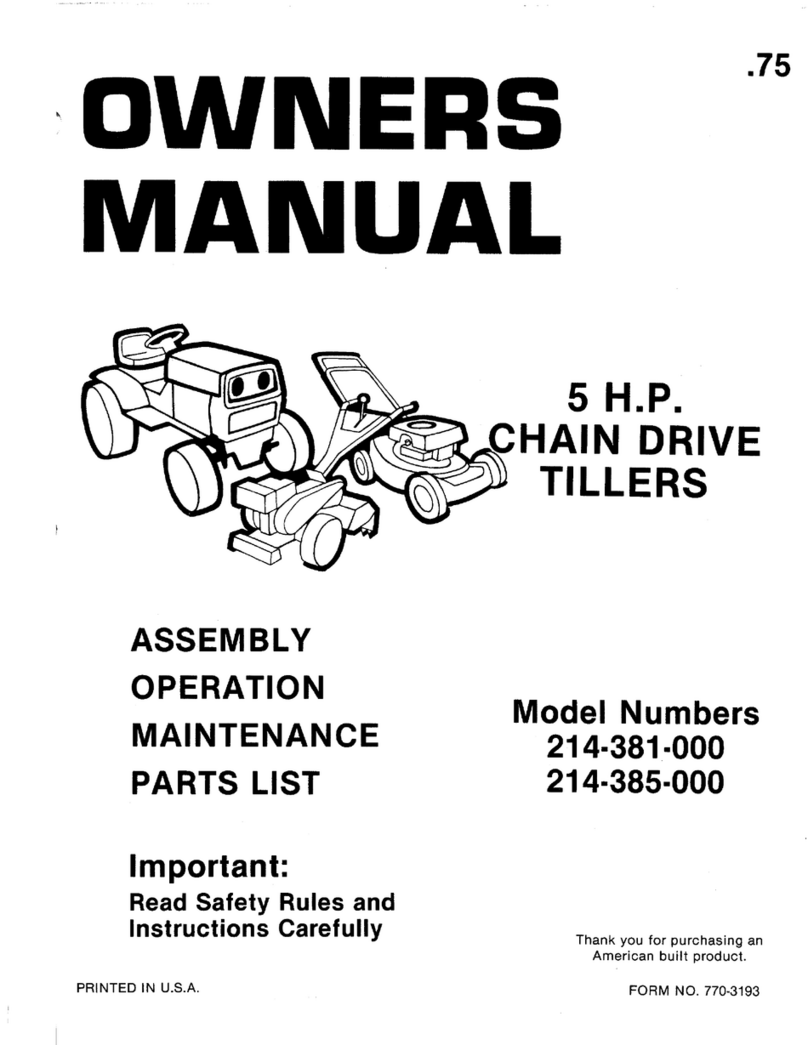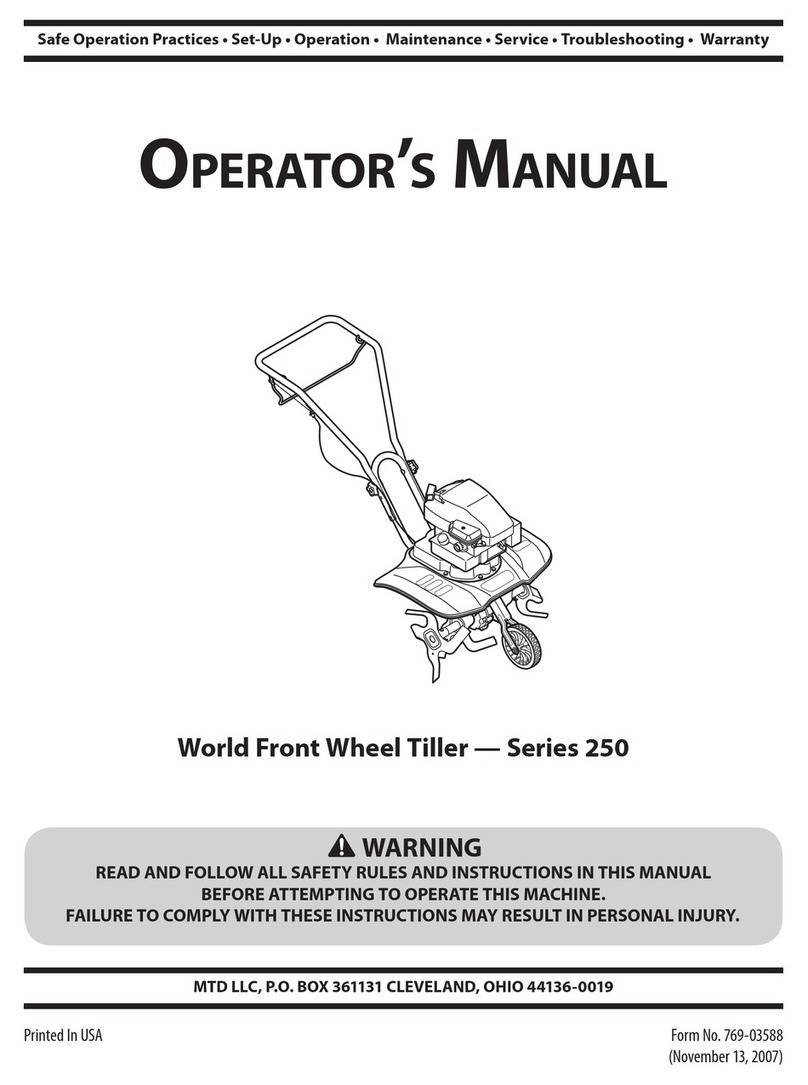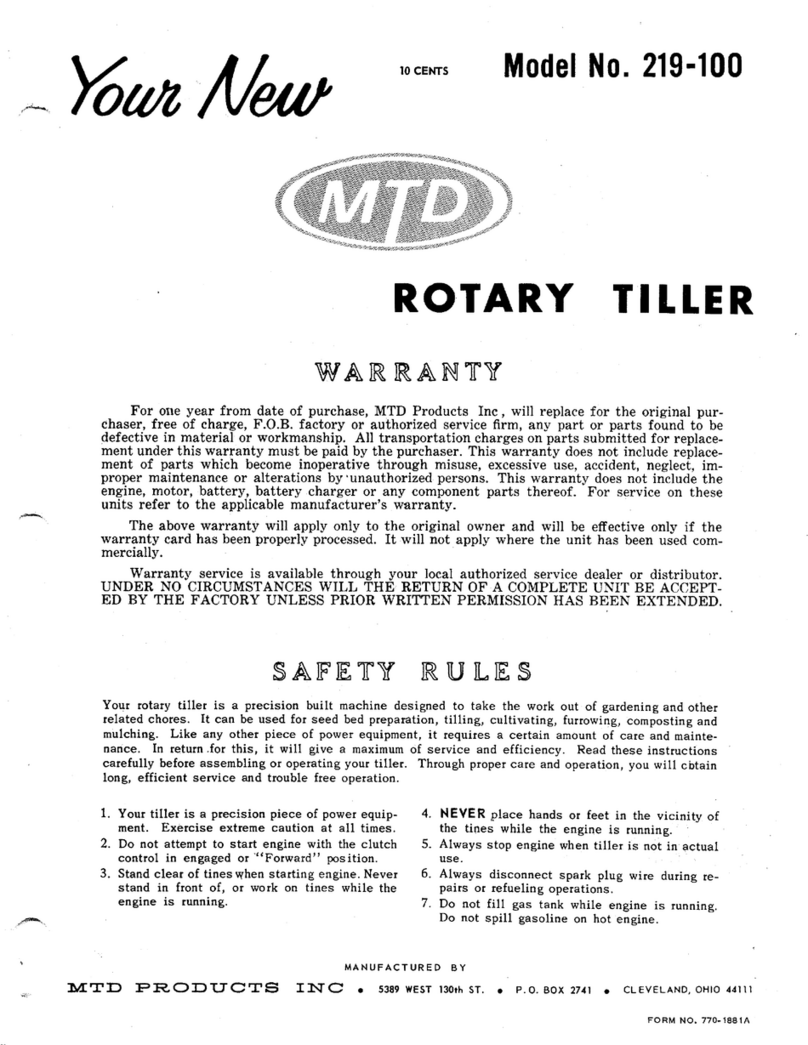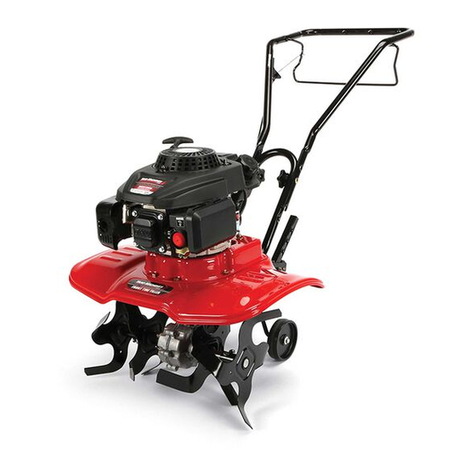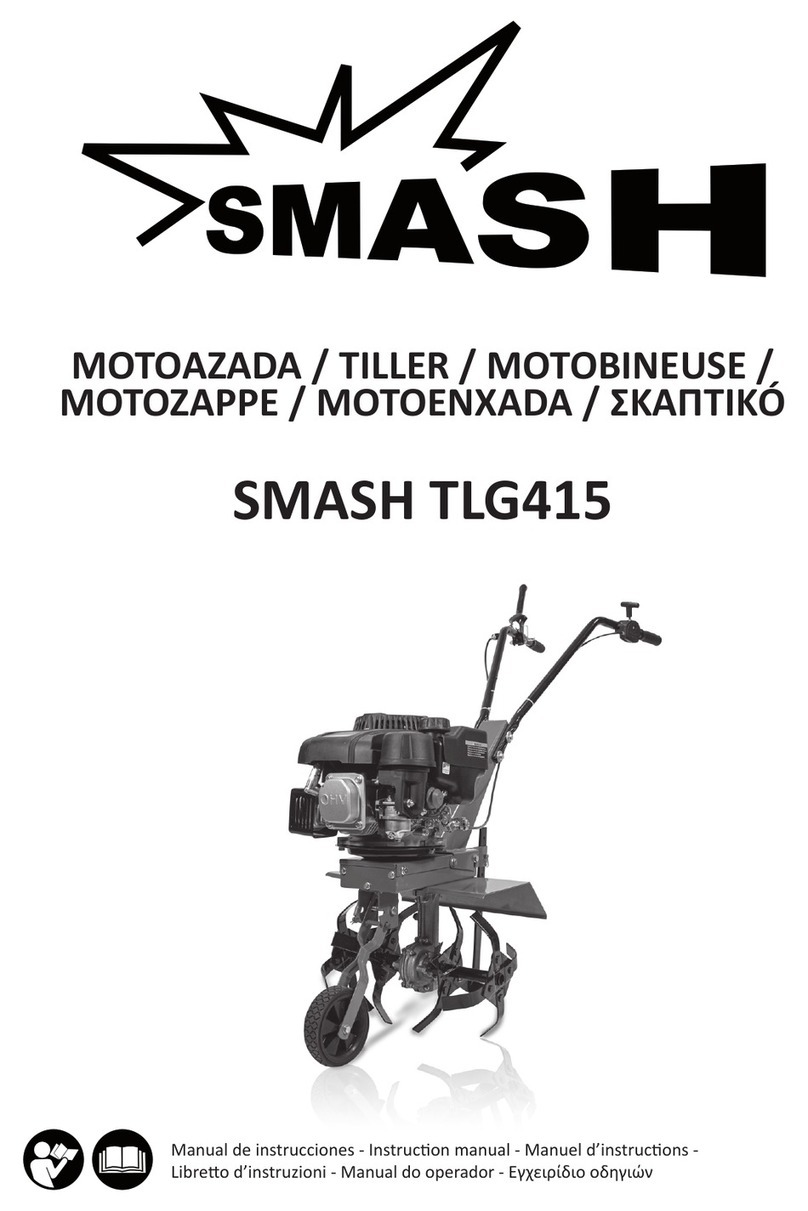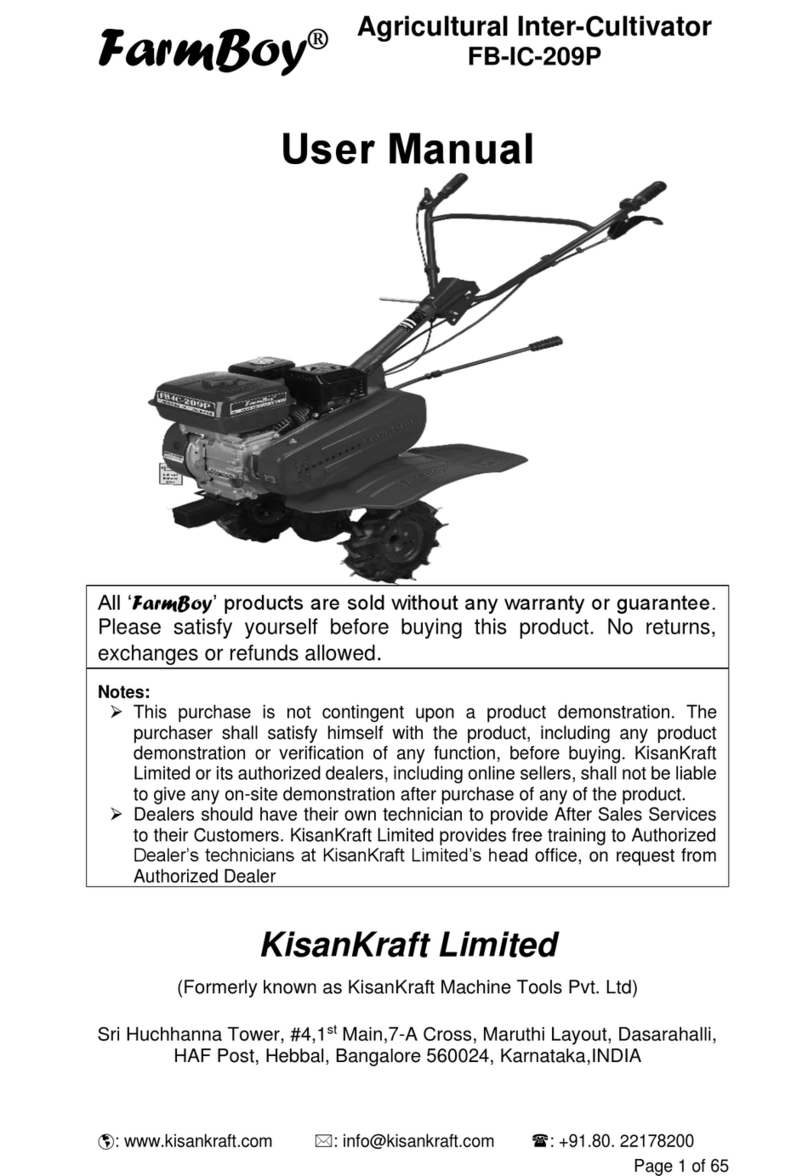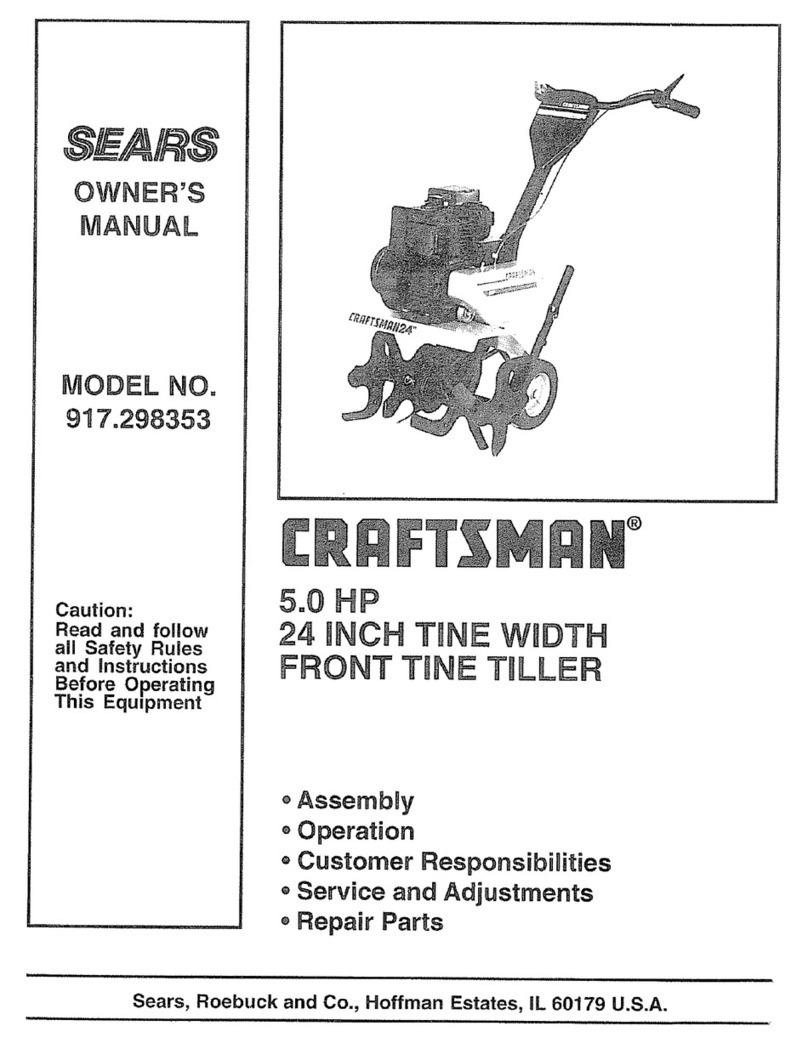
English Operating manual for engine
8
Contents
Use of this document . . . . . . . . . 8
For your safety . . . . . . . . . . . . . . 8
About the engine. . . . . . . . . . . . . 9
Operating instructions. . . . . . . . 10
Maintenance/cleaning . . . . . . . . 11
Cleaning the engine . . . . . . . . . 13
Storage . . . . . . . . . . . . . . . . . . . 14
Warranty . . . . . . . . . . . . . . . . . . 14
Troubleshooting . . . . . . . . . . . . 15
Use of this document
As user of this unit, read these
operating instructions through
carefully before using the unit for
the first time. Comply with the
operating manual and keep it for
subsequent use. Never allow
children or other people who do not
know this operating manual to use
the mower.
Persons younger than 16 years of
age must not use this unit – beyond
this the minimum age of users is
defined by local regulations.
This manual includes safety
instructions which
– point out dangers in connection
with the engine,
– indicate risks of injury,
– show how the risk of injury can
be avoided or reduced.
The safety instructions in this
manual are identified as follows:
Danger!
Denotes impending danger. Non-
observance of this warning may
result in death or extremely severe
injuries.
Caution!
Denotes a dangerous situation.
Non-observance of this warning
may result in slight injury or
damage to property.
Note
Denotes application tips and
important information.
Specifications on the engine
housing
Fig. 10
These specifications are very
important for subsequent
identification when ordering spare
parts and for customer service.
Enter all engine specifications in
the box (fig. 11).
For your safety
Note
In general the term “unit” is used in
the following. The engine can be
installed in different units.
Danger!
Follow all safety and operating
instructions in the operating
manual for the unit on which this
engine is mounted.
Risk of explosion and fire!
Petrol and petrol vapours are
extremely flammable and
explosive. A fire or an explosion
may result in serious burns or
fatalities. If petrol gets onto your
body or clothing, wash skin
immediately and change clothing.
– Before refuelling, switch off the
engine and leave to cool down
for at least two minutes before
opening the fuel cap.
– Fill up the tank outdoors or in a
well ventilated area only.
– Use authorised fuel containers
only.
– Never fill up a petrol can in a
vehicle, tractor or on a trailer with
plastic panelling. Always fill a
petrol can on the ground and at
some distance from the vehicle.
– If possible, take motorised units
out of the heavy goods vehicle or
the trailer and refuel on the
ground. If this is not possible, fill
up these units with a petrol can
instead of directly with the petrol
pump hose.
– Always place and maintain the
fuel hose on the edge of the filler
neck on the tank or petrol can
until refuelling is complete. Do
not use the locking lever for con
-
tinuous filling.
– Do not overfill the tank. Fill the
tank until approx. two centi
-
metres below the rim of the filler
neck to allow the fuel to expand.
– Keep the fuel away from sparks,
naked flames, warning lights,
heat and ignition sources.
– Never refuel units in closed
rooms, as flammable vapours will
form.
– Do not smoke.
– Frequently check fuel lines, tank,
fuel cap and connection parts for
cracks and leaks. If required,
replace.
– Before starting the engine,
ensure that the spark plug,
exhaust, fuel cap and air filter
have been attached.
– Do not start the engine without
installed spark plug.
– Fuel has been spilled, wait until
the fuel has evaporated before
starting the engine.
– When operating units, do not tilt
the engine or the unit to such an
extent that fuel can run out.
– Do not use the choke to stop the
engine.
– Transport units with empty tank
only.
– Keep petrol or units with full tank
away from heaters, ovens, hot
water boilers or other equipment
which feature warning lights or
other ignition sources, as these
may ignite petrol vapours.
Risk of explosion and fire!
Sparks are generated when the
engine is started. These sparks
may ignite flammable vapours in
the vicinity. This may result in an
explosion or fire.
– Do not start the engine near
damaged, gas-operated
equipment.
– Do not use any pressurised
starting aids, as their vapours are
flammable.
